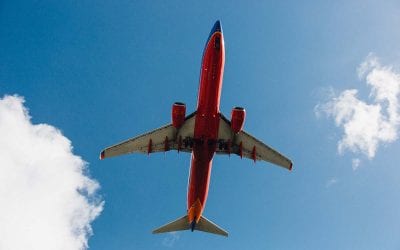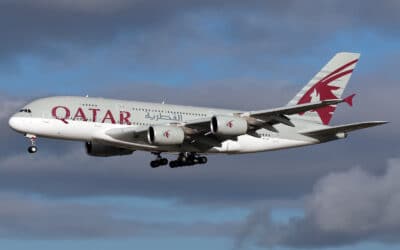Flight delay compensation and checked baggage delay refund rules are DOA.

Photo by Kevin Woblick Unsplash.
More than three years after it was first proposed, the Department of Transportation announced a new flight delay compensation rule. This would have triggered automatic refunds if flights were delayed. Airlines were frantic, and consumers were dismayed.
In April 2024, the DOT announced a rule providing flight delay compensation and baggage delay rules. It would also set the standard for significant delays. Unfortunately, this confusion caused Airlines for America to take the Department of Transportation to court and challenge the rulemaking. A quick ANPRM only muddied the waters further.
I was appointed during the first Trump administration to the first iteration of the consumer advisory committee. I saw how the administration dealt with consumer-oriented rules. Needless to say, the administration did not disappoint,
I have read all the rules, but I am at a loss as to just what is included in the original rulemaking. I think after the court cases and the recent ANPRM, we have come full circle. The old rules apply.
Count again if you are counting on the flight compensation rules and baggage delay rules.

The Judicial system has stymied the significant delay compensation rule dealing with airline passenger rights. Airlines for America and the abysmal performance and DOT’s delays drove a stake into the rule. The advanced notice of rulemaking was squeezed extremely late in the former secretary’s tenure. It only succeeded in adding ammunition to the airlines’ point of view.
Consumer advocates have long sought such protections in the U.S., similar to those in the European Union (EU), Canada, and other regions, which they have enjoyed for decades.
In addition to protecting airline passengers, delay compensation rules would improve marketplace competition, encourage carriers to invest in their operational capacity, and reduce the frequency and impact of the significant service meltdowns that have plagued the industry for the past few years. Research has found that the EU’s policy is likely the most effective of the compensation regimes currently in force. It has positively impacted air service and has not negatively affected airlines’ financial earnings. In short, the anticipated rules would ensure a more robust air transportation system, benefiting consumers, market competition, and the millions of Americans whose communities are enhanced by a strong and fair aviation industry.
Airlines claim that consumers are treated well in the aviation industry.

According to the Airline Association (A4A), every action they took was based on competition and airline policies.
Here are the problems with the rulemaking.
Our passenger problems are focused on the US to EU flight (part of EU 261).
Here, we have a difference of an hour’s delay between the European Union (EU) rule and the US coming rule for transatlantic tic flights.
According to The New York Times, “Domestic airlines have been allowed to define what constitutes a “significant” delay. Passenger compensation has varied by carrier. According to the DOT, there will be one standard: when departure or arrival is delayed by three hours for domestic flights and six hours for international flights. This is wrong.
Why aren’t the delays the same for flying to the European Union and returning from Europe?
The European Union Rule 261 is set for transatlantic flights. It is confusing enough by itself. Only European metal aircraft are eligible for eastbound flight delays. Return Europe-to-US flights can be any airline taking off from the European Union.
Unfortunately, the law of unintended consequences could make things worse for the traveling public under these new DOT policies. For instance, a significant schedule change on one half of a roundtrip could result in the whole trip being canceled and refunded, potentially leaving travelers out of luck on their return.
Passengers will get prompt refunds for flight cancellations or significant flight changes for any reason.
When things go wrong, getting compensation from an airline is difficult. It often requires establishing a cumbersome paper trail or spending untold hours on the phone. Under the new rules, refunds were to be automatic. Passengers would not request them. Refunds will be made in full, except the value of any transportation already used. These refunds only apply if the traveler chooses not to fly on their original or rebooked flight. Airlines and ticket agents must provide refunds in the original form of payment, whether by cash, credit card, or airline miles.
Refunds are due within seven days for credit card purchases and within 20 days for other costs.
Not all airlines have the same interpretation of how to implement the rule. Consumers should expect the worst.
Unfortunately, the law of unintended consequences of new policies could make things worse for the traveling public. For instance, a significant schedule change on one half of a roundtrip could result in the whole trip being canceled and refunded, potentially leaving travelers out of luck on their return.
This is certainly NOT what the DOT had in mind when implementing this rule. But unintended consequences are real. And with the new administration in place, we probably won’t see the DOT take any further action for some time, if ever. Here, we expect at least not for four to six years.
The writers understated the hassles and monetary losses consumers assumed when they accepted the rulemaking for international flights. Click here for the proposed complete delay rule (https://www.transportation.gov/airconsumer/latest-news and at regulations.gov, docket number DOT-OST-2022-0089).

Don’t expect any changes to delay rules in the next four to six years.
Here is an example of a DOT rule that was cobbled together to make a deadline. If only the Secretary of Transportation had his people spend a bit more time on these important consumer protections. Plenty of problems with this rule will lead one to blame the DOT or Airlines for America. The lack of definitions and possible unintended consequences doomed this rule. The new administration will surely kill it.
READ ALSO:
Travel agents still exist, but they may not want your business
Has the industry taken travel self-service too far?

Charlie Leocha is the President of Travelers United. He has been working in Washington, DC, for the past 14 years with Congress, the Department of Transportation, and industry stakeholders on travel issues. He was the first consumer representative to the Advisory Committee for Aviation Consumer Protections appointed by the Secretary of Transportation from 2012 through 2018.



